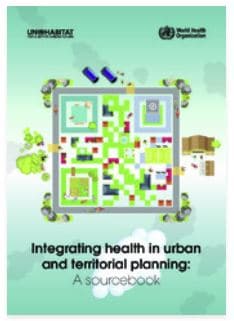-
Phone Number
-
Email Address
Efforts to slow the spread of the coronavirus are driving creative design interventions and that they save lives in big cities.
In recent months we have seen the reuse of buildings, shipping containers as facilities medical or inflatable hospitals as we saw in this article.
Now that social life is becoming active in many countries on the streets. Urbanists have a lot of work to maintain a balance between the new concept of «social distancing» and generate ideas that combine efforts, creativity and resources in the fight against viruses.
A new urbanism will have to change many traditional concepts to protect citizens , and this is where a new guide comes in published by NACTO (National Association of City Transportation Officials).
The manual called « Streets for Pandemic Response and Recovery “, is a strategy guide planning – is the first serious manual that we have seen – to adapt and redesign vials against social distancing that will protect the pedestrian.
But… What is special about this document? It is actually a resource that collects emerging practices that are being used in cities of the whole world (three months of analysis) and includes information adaptive on the restructuring of street design to provide a rapid and recovery response to the COVID-19.
The document offers both specific treatments, fast response and design-based, as examples practices of urban actions to help the cities to act responsibly and equitably while works to transform the built environment.
And it's time to see some of the highlights…
Content menu:
As the first wave of the pandemic fades, policies reconceive the streets as public spaces and your duty is to help people to come together in a way safe, but without losing perspective that a bad vial designed is dangerous against road traffic.
Mark distances on the roads, yes!, but without leaving of losing the reasoning and perspective that most The cities of the world are designed for vehicles, and therefore Therefore, the "weak" element in the city is the pedestrian.
“As urbanists who structure cities and the transport, our job is not to return to the bosses unfair, dangerous and unsustainable of the past, we are before a new opportunity to help shape a future better.»
The streets we create today will provide the foundation for a recovery in the years to come
Cities should establish principles to guide economic investments and decision making. The principles of each city should be based on the local context, the history and need, and should be shared publicly:
The streets will evolve during the crisis. with circumstances so changing where the pandemic evolves irregularly with reference to the number of infected (ups and downs), we must be prepared to be able to change the structures vials quickly.
The document, in this situation, has the following outline on the types of policies to consider:

One of the urban elements that will change the most in the cities will be the sidewalks. They no longer just have to be space for social distancing, but also have to become spaces where you can queue up for businesses places, waiting for public transport, etc. Without losing the traditional security and at an economic cost reasons (Also see urban design manuals)
The document relates different files where they are located common real situations in cities around the world and where the context is analyzed with key points.
As a curious point of the report, we want to leave the following image of a market and how the location of stalls for social distancing coherent:
THE understand and see how they are acting in other cities of the world can help us practice more accurate actions in our cities.
First, we recommend viewing the document Streets for Pandemic Response and Recovery from HERE. It must be considered that NACTO is collecting a lot of urban information of what is happening around the world about COVID 19, and we can see it from HERE (Highly recommended)

The reference work also shows how an approach integrated health care can influence decisions about sectors such as housing, transport, energy, water or sanitation. And more importantly, consider how all of them are linked to the Development Agenda Sustainable by 2030.
The document «Integrating health in urban and territorial planning» can be seen and downloaded from HERE (It is in English)